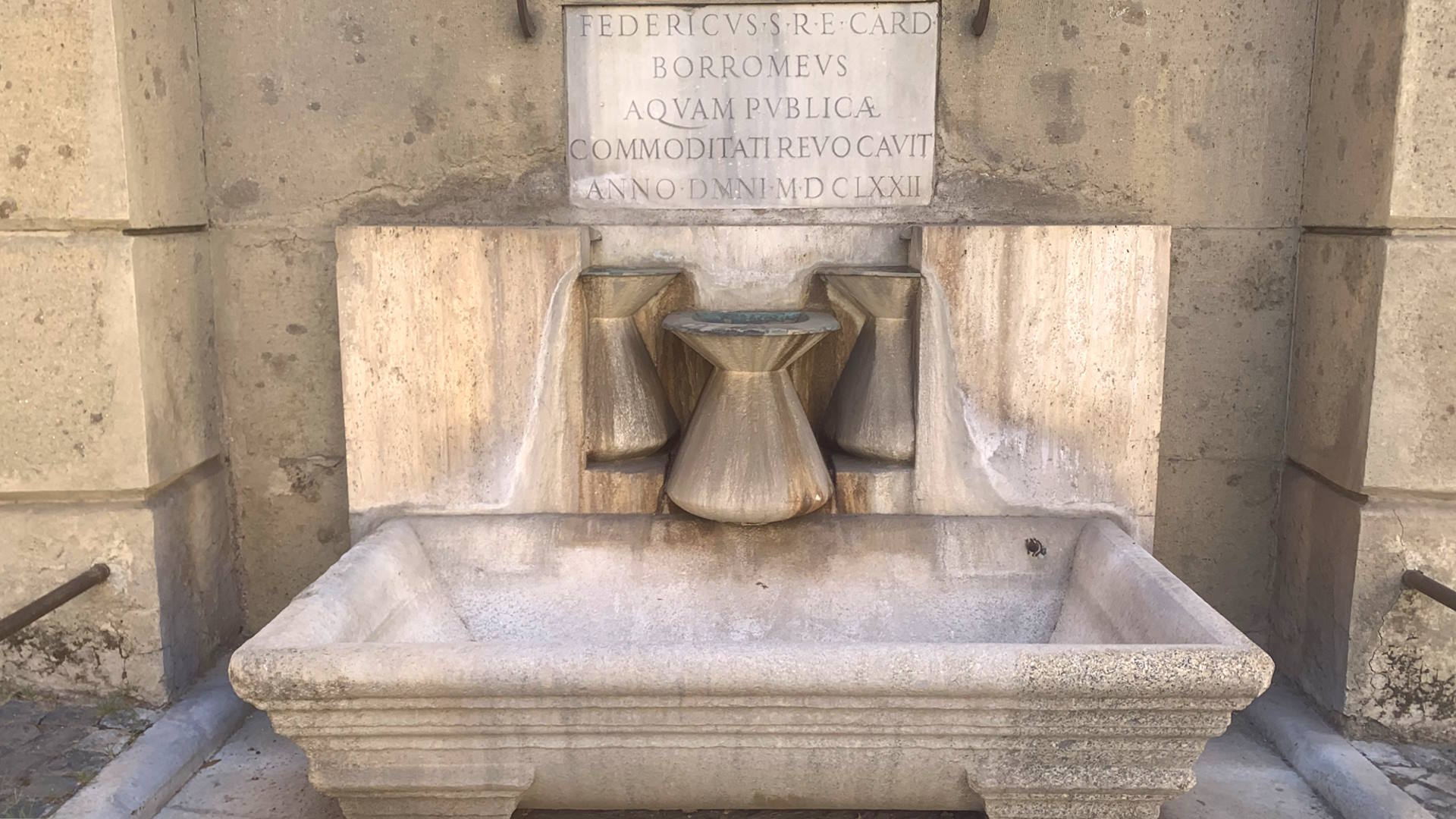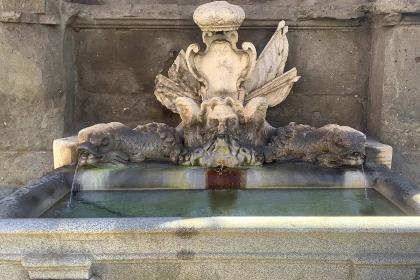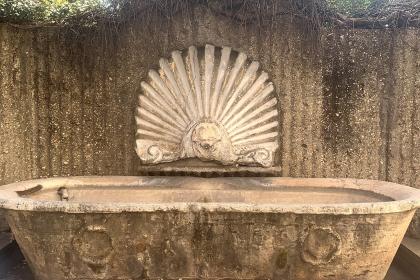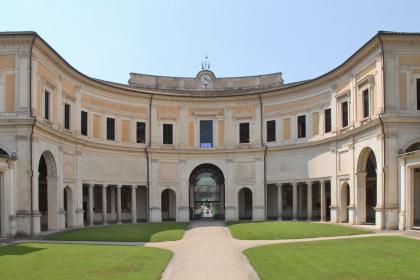
In the Pinciano district, at the corner of Via Flaminia and Via di Villa Giulia, right opposite the monumental fountain of Pope Julius III, Giovanni Maria Ciocchi del Monte, is this fountain with a very curious history of inexplicable displacements, dismantling and reconstructions.
Above the present fountain of the Conche, an epigraph reads ‘FEDERICUS S.R.E. CARD BORROMEUS AQUAM PUBBLICAE COMMODITATI REVOCAVIT ANNO DOMINI MDCLXXII’, but what is inscribed on the commemorative slab above it has little to do with the original layout commissioned by the pope and is, in fact, even subsequent to it.
In short, a complex and at times confusing story revolves around this fountain, which was created to adorn the entrance to the papal villa on the Via Flaminia, together with that of Julius III, with which it formed an unusual proscenium to the papal palace at the end of the street.
Initially, therefore, the fountain, possibly the work of Bartolomeo Ammannati, also the creator of that of Julius III and the pope's villa, was a simple horse watering hole consisting of an oval granite thermal basin from the Roman period, with relief font handles.
In 1672, Cardinal Federico Borromeo moved his residence to the papal villa, a splendid example of a Renaissance mansion that today houses the ETRU Museo Nazionale Etrusco (National Etruscan Museum), and had the fountain ̶ whose water flow had in the meantime been cut off ̶ restored to make it, like Julius III's, ‘worthy’ of adorning the only entrance to Villa Giulia that corresponds to today's street of the same name. He therefore had a sumptuous two-order architectural prospectus created in which to insert the fountain, had his heraldic coat of arms added, the above-mentioned inscription, and a mask that, placed in the centre of the valve of a shell, poured water from its mouth into the ancient Roman basin. Today, the fountain thus composed is known as the Abbeveratoio or Archosolium of Benedict XIV, and can be admired at n. 158 of the Via Flaminia, leaning against an undulating concrete wall, the work of the architect Attilio Spaccarelli.
In 1877, during the construction of the sewage system in Campo Marzio, the fountain of the Babuino in the street of the same name was removed for traffic issues and dismembered: the Silenus, one of Rome's talking statues, was moved to Palazzo Boncompagni Cerasi, in whose courtyard it remained for eighty years; the basin replaced the trough in Via di Villa Giulia.
In 1934, the Cassa del Notariato, the new owner of the palace on which the fountain rested, had Cardinal Borromeo's façade demolished and, as we have seen, had the trough and the shell moved further towards Piazza del Popolo.
Moreover, architect Armando Foschini, who also designed the building of the Cassa Nazionale del Notariano, based on a design by architect Vittorio Grassi, entirely reconstructed the structure of the fountain in Via di Villa Giulia by adding a central bowl to the granite basin, flanked by two slightly raised side half-bowls, and placing the whole thing against a travertine wall.
In 1957, the Babuino fountain was reconstituted and put back in place with its basin, which was then removed from the drinking fountain in Via Flaminia, for which an identical copy was made in granite.
To crown the composition by Foschini and Grassi, there is the marble plaque of Federico Borromeo, in memory of the old drinking fountain, a plaque that still tells those who pass by the fountain that it was built for ‘publicae commoditati’, that is, for ‘public use’ for those who, arriving from northern Italy, after crossing the Tiber, travelled along the ancient via Flaminia to enter Rome through Porta del Popolo.
Photo: Redazione Turismo Roma
Fountain of Julius III (of the Acqua Vergine in Via Flaminia)

 Condividi
Condividi
Fontana abbeveratoio di Benedetto XIV

 Condividi
Condividi
ETRU - National Etruscan Museum of Villa Giulia

 Condividi
Condividi
Information
 Condividi
Condividi
Location
To find out about all accessibility services, visit the Rome accessible section.











































